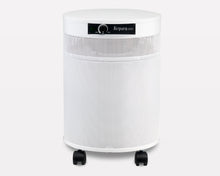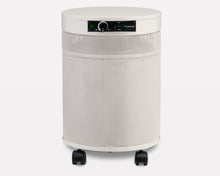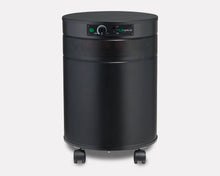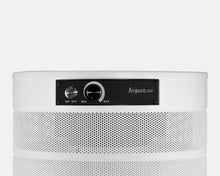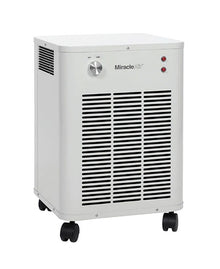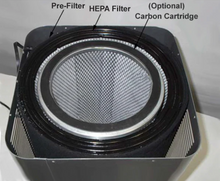Hidden Asthma Triggers in Your Home: Can Air Purification Really Help?

Published: August 7, 2025 | Author: Commercial Air Purifiers Indoor Air Quality Expert
If you're reading this while dealing with unexplained asthma flare-ups, you're not alone. Despite following your treatment plan religiously, you might still find yourself reaching for your inhaler more often than you'd like. The culprit could be hiding in plain sight—right inside your own home. Research shows that reducing asthma triggers in the home is linked to improvements in asthma outcomes such as reduced hospitalizations and emergency department visits, yet many people remain unaware of the invisible threats lurking in their living spaces.
Your home should be your sanctuary, not a source of respiratory distress. In this comprehensive guide, we'll uncover the most common household asthma triggers, explore the latest research on indoor air quality, and examine whether air purification technology can genuinely make a difference in managing your symptoms.
The Hidden Reality of Indoor Asthma Triggers
Asthma remains the most common chronic condition of childhood, with strong evidence linking exposure to allergens and other triggers commonly found in homes to allergen sensitization and asthma incidence and morbidity. What makes this particularly concerning is that many of these triggers are invisible to the naked eye, operating silently to worsen your respiratory health.
The scope of this problem is more significant than most people realize. Clinical research shows that 46%-76% of clinicians discuss environmental triggers during asthma visits, indicating that healthcare providers recognize the critical role our home environment plays in asthma management. However, there's often a disconnect between awareness and action when it comes to identifying and addressing these triggers in our daily lives.
Modern homes, while more energy-efficient than ever before, can inadvertently trap pollutants and allergens inside. Our well-sealed living spaces, designed to keep conditioned air in and outdoor elements out, can sometimes work against us by concentrating indoor air pollutants. This creates a perfect storm for asthma sufferers who spend an average of 90% of their time indoors.
The Science Behind Common Household Asthma Triggers
Understanding what triggers your asthma attacks at home requires looking beyond the obvious culprits. While everyone knows that pet dander and dust mites can cause problems, the reality is far more complex and nuanced.
Particulate Matter: The Invisible Threat
Recent research has found that coarse particulate matter has been associated with prevalent asthma, expanding our understanding beyond fine particles to include larger airborne contaminants. These particles come from surprising sources within your home: cooking activities, candle burning, fireplace use, and even the simple act of walking across carpeted floors can release particulates into your breathing space.
What makes particulate matter particularly problematic for asthma sufferers is its ability to penetrate deep into respiratory passages. While your nose and upper airways can filter out larger particles, smaller ones slip through your body's natural defenses and reach the sensitive tissues of your lungs, where they can trigger inflammatory responses.
Chemical Irritants: The Scented Saboteurs
Irritants such as scented cleaning products represent a significant category of asthma triggers that many people overlook. The modern home is filled with chemical fragrances from air fresheners, laundry detergents, fabric softeners, and cleaning supplies. These volatile organic compounds (VOCs) can remain airborne for hours after use, continuously irritating sensitive airways.
The challenge with chemical irritants is that they don't affect everyone equally. Some people can tolerate strong scents without issue, while others experience immediate respiratory distress. This variability often leads to dismissing chemical sensitivities as psychosomatic, when in reality, they represent legitimate physiological responses to environmental toxins.
Biological Contaminants: The Living Triggers
Mold spores, dust mites, and pet allergens represent the biological side of indoor air pollution. These living or once-living materials can multiply rapidly under the right conditions, creating concentrated pockets of allergens throughout your home. Unlike chemical pollutants that might dissipate over time, biological contaminants can establish persistent colonies that continuously release trigger substances into your air.
Common triggers include dust, smoke, fumes, grass and tree pollen, animal fur and feathers, strong soaps and perfume, according to the World Health Organization. What's particularly insidious about biological triggers is their ability to become airborne through normal household activities like vacuuming, bed-making, or simply walking through your home.
Real-World Impact: How Home Triggers Affect Daily Life
The connection between indoor air quality and asthma symptoms isn't just theoretical—it plays out in real homes every day. Consider Sarah, a working mother who couldn't understand why her seven-year-old son's asthma seemed worse at home than at school. After conducting an indoor air quality assessment, she discovered that their recently remodeled basement playroom was harboring elevated levels of formaldehyde from new furniture and carpeting, combined with increased humidity that promoted dust mite growth.
Within two weeks of implementing targeted interventions—including increased ventilation, humidity control, and the introduction of air purification—her son's nighttime coughing decreased significantly, and his peak flow readings improved by 15%. This real-world example illustrates how multiple triggers often work together to create a cumulative effect on respiratory health.
Environmental factors can also interact with weather patterns to amplify asthma triggers. Research reveals that extreme weather events, including heatwaves and heavy rainfall, elevate childhood asthma risks across various climates, with significant effects observed during summer and winter months. During humid summer months, indoor allergen levels can spike as dust mites and mold thrive in elevated moisture conditions. Conversely, winter months bring increased time indoors with heating systems that can circulate accumulated pollutants throughout living spaces.
The Air Purification Solution: Separating Fact from Fiction
Given the complexity of indoor asthma triggers, many people turn to air purification as a potential solution. But does the science support the marketing claims? The answer is more nuanced than a simple yes or no.
The HEPA Filter Advantage
HEPA (high efficiency particulate air) filters are designed to capture 99.7 percent of all particles 0.3 microns or smaller, making them particularly effective against many common asthma triggers. This level of filtration can remove dust mites, pollen, pet dander, and most mold spores from the air that passes through the device.
The Environmental Protection Agency (EPA) has confirmed that HEPA filters can remove up to 99.97% of dust, pollen and any airborne particles with a size of 0.3 microns, providing scientific backing for their effectiveness against particulate triggers.
Clinical Evidence for Air Purifier Effectiveness
Recent research provides encouraging evidence for air purification in asthma management. A randomized trial demonstrated the effectiveness of HEPA air cleaners to reduce indoor particulate matter among children with asthma, showing measurable improvements in air quality that corresponded with reduced respiratory symptoms.
The EPA confirms that portable HEPA air cleaners have been shown to benefit allergy and asthma symptoms, lending institutional credibility to their use as part of comprehensive asthma management strategies.
Understanding Air Purifier Limitations
While air purifiers can be effective tools, they're not magic bullets. Experts from the American College of Allergy Asthma and Immunology have stated that air filters can reduce the levels of indoor ambient particles, thus potentially mitigating the progression of allergic airway disease, but they emphasize "potentially" for good reason.
Air purifiers work by cleaning the air that passes through them, but they cannot address pollutant sources or provide whole-house coverage unless properly sized and positioned. HEPA filters, UV air filters, and ion filters are very good at removing dust, dander, pollen, and mold, but they are not great at removing odors, highlighting the importance of understanding what specific triggers you're dealing with.
Practical Strategies for Trigger Identification and Management
Successfully managing household asthma triggers requires a systematic approach that goes beyond simply purchasing an air purifier. The most effective strategies combine trigger identification, source control, and targeted air cleaning.
Conducting Your Own Home Assessment
Start by keeping an asthma symptom diary that includes location and timing information. Note when symptoms worsen and what activities preceded flare-ups. Pay particular attention to symptoms that occur after cleaning, cooking, or spending time in specific rooms of your home.
Common problem areas include basements (mold and humidity), bedrooms (dust mites and pet allergens), kitchens (cooking particles and chemical cleaners), and bathrooms (mold and chemical products). Walk through your home with fresh eyes, looking for visible signs of mold, excessive dust accumulation, or strong chemical odors.
Source Control: The First Line of Defense
Before investing in air purification technology, address pollution sources directly where possible. Replace harsh chemical cleaners with gentler alternatives, ensure proper ventilation during cooking and cleaning activities, and maintain indoor humidity levels between 30-50% to discourage dust mite and mold growth.
The Environmental Working Group recommends using a filter that replaces the air volume in a room two to three times every hour, providing guidance for those who do choose to incorporate air purification into their management strategy.
When Air Purification Makes Sense
Air purifiers work best as part of a comprehensive approach rather than standalone solutions. They're most effective when used in specific circumstances: bedrooms where you spend 6-8 hours daily, home offices where you work regularly, or rooms where complete source elimination isn't possible.
The AAFA recommends air purifiers with certified asthma- and allergy-friendly filters, which remove almost 98% of allergen air particles, providing specific guidance for consumers navigating the crowded air purifier market.
Integrating Air Purification with Comprehensive Asthma Care
The most successful approach to managing household asthma triggers combines environmental control measures with proper medical care. Air purification should complement, not replace, your prescribed asthma medications and regular healthcare provider consultations.
Work with your healthcare provider to identify your specific trigger profile through allergy testing if appropriate. This information can guide your environmental control efforts and help you make informed decisions about air purification technology. Some people benefit most from addressing particulate triggers, while others need to focus on chemical irritants or biological allergens.
Consider the economics of comprehensive trigger management. While high-quality air purifiers represent a significant upfront investment, they can potentially reduce healthcare costs associated with asthma complications, missed work days, and emergency interventions when used as part of an effective management strategy.
Frequently Asked Questions About Asthma Triggers and Air Purification
Q: How quickly can I expect to see results from using an air purifier for asthma? A: Most people notice improvements in air quality within 24-48 hours of using a properly sized HEPA air purifier. However, asthma symptom improvements may take 2-4 weeks as your airways recover from reduced trigger exposure.
Q: Do I need an air purifier in every room? A: Focus on rooms where you spend the most time, particularly bedrooms and primary living spaces. A single, properly sized unit can effectively clean the air in a 300-400 square foot area when doors remain open.
Q: Can air purifiers help with asthma triggers from cooking? A: Yes, but ventilation is more important. Use exhaust fans during cooking and consider a portable air purifier in the kitchen area to capture lingering particles after meal preparation.
Q: What's the difference between air purifiers and whole-house air filtration systems? A: Whole-house systems filter air through your HVAC system and can address entire homes, while portable units provide concentrated cleaning in specific areas. Both can be effective depending on your specific needs and budget.
Q: How do I know if my home's air quality is actually improving? A: Monitor your asthma symptoms, peak flow readings if you use them, and consider investing in an indoor air quality monitor to track particle levels, humidity, and VOCs over time.
Taking Control of Your Indoor Air Environment
Managing asthma triggers in your home environment isn't about achieving perfection—it's about making informed decisions that reduce your overall trigger burden and improve your quality of life. The research clearly demonstrates that reducing asthma triggers in the home is linked to improvements in asthma outcomes, providing hope for better symptom control through environmental management.
Air purification technology, when properly selected and used as part of a comprehensive approach, can play a valuable role in this process. However, success depends on understanding your specific triggers, addressing pollution sources when possible, and maintaining realistic expectations about what any single intervention can accomplish.
The path forward involves combining scientific knowledge with practical action. Start by identifying your most significant triggers, implement source control measures where feasible, and consider air purification as a supportive tool rather than a complete solution. Most importantly, work closely with your healthcare provider to ensure that environmental control measures complement your medical treatment plan.
Your home environment significantly impacts your respiratory health, but with the right knowledge and tools, you can create a space that supports rather than undermines your asthma management efforts. The investment in understanding and improving your indoor air quality pays dividends in better breathing, improved sleep, and enhanced overall well-being.
This article is for educational purposes and should not replace professional medical advice. Always consult with your healthcare provider before making significant changes to your asthma management plan.
Sources:
- National Institute of Environmental Health Sciences (NIEHS) Environmental Factor Research, May 2024
- Minnesota Department of Health Asthma and Home Environment Guidelines
- World Health Organization Asthma Fact Sheet, 2024
- Environmental Protection Agency Indoor Air Quality Guidelines
- American College of Allergy, Asthma & Immunology Treatment Recommendations

